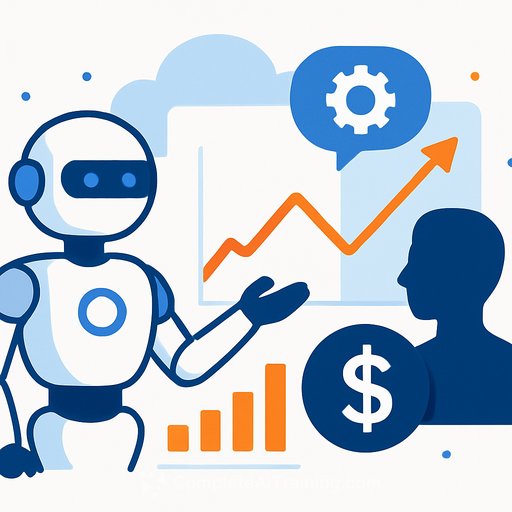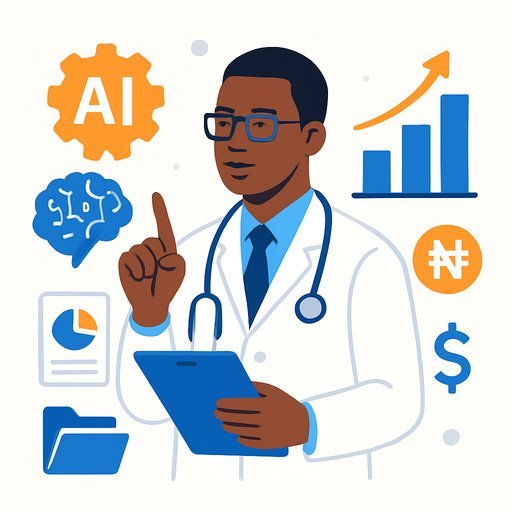AI in Healthcare Benefits: From Proof of Concept to Real Results
AI in healthcare is no longer hypothetical. It's here, it's accelerating, and the window for experimentation has narrowed. A recent MedCity Index survey co-sponsored by Quantum Health found that 72% of consultants now advise clients on AI in benefits programs - nearly a third do so frequently, up from just 20% a year ago. Yet adoption is uneven, results vary, and too many tools create noise instead of value.
Benefits and HR leaders need clarity on where AI actually moves the needle: timely interventions, stronger member and provider engagement, and measurable outcomes. The focus now is turning intelligence into action - consistently and at scale.
From Automation to Anticipation
Answering questions is table stakes. The real step forward is anticipating needs and intervening in real time. With the right data, predictive models can flag a looming care gap, avoidable cost, or high-risk event - before it hits your plan and your people.
Half of consultants surveyed point to persistent gaps in personalization, care coordination, and engagement. AI can target those gaps with proactive, clinically embedded navigation that guides members through key moments. Consider a first chemotherapy appointment: an AI system can flag a missing authorization three days ahead, giving care teams enough time to resolve it and prevent a delay. That timely fix builds trust during one of the hardest chapters a member may face.
Precision Cost Management with Predictive Analytics
Employers are bracing for another year of higher costs, with a median 9% increase projected, according to the Business Group on Health's latest survey. Passing that burden to employees isn't a strategy. You need to remove avoidable costs upstream and prove the savings.
AI-driven navigation links real-time actions to downstream financial and quality outcomes. Models can spot patterns that precede expensive problems - delayed follow-ups, avoidable ER visits, duplicate testing - and trigger fast outreach. Pharmacy spend deserves special attention as high-cost therapies like GLP-1s grow quickly; AI can guide decisions at scale by flagging where these treatments deliver clinical value and where alternatives may be better aligned to policy and outcomes.
Engagement That Closes Gaps in Care
Engagement isn't about more touchpoints; it's about the right moment with the right action. AI helps identify who is likely to fall through the cracks and surfaces precise next steps - care coordination, benefits guidance, or behavioral nudges.
But tech alone won't carry the experience. AI can flag issues and suggest fixes, while trained humans deliver reassurance, context, and confidence. Done well, technology creates room for more empathy, not less.
Differentiation Through Action, Not Just Insights
The market is crowded with AI-enabled dashboards and point tools. Insight without execution leaves members and employers doing the hard work on their own. The advantage goes to teams that pair AI intelligence with care professionals who can act in the moment to resolve what's in front of the member or provider.
Chatbots can handle simple questions. Complex or high-stakes situations demand a combined model: smart triage, clear next steps, and skilled humans who close the loop.
How to Move Now: A Short Checklist
- Set 3-5 priority outcomes and metrics (e.g., avoidable ER visits, time-to-appointment, closed care gaps, PMPM trend).
- Map your data inputs and access (eligibility, claims, PA status, provider data, SDOH signals). Close the latency gaps.
- Target predictable moments: pre-authorizations, care transitions, specialty referrals, high-cost pharmacy starts.
- Build closed-loop workflows so every alert routes to an accountable team with a defined SLA.
- Track both savings and experience (member NPS, provider effort, first-contact resolution).
- Establish governance for model drift, bias, and privacy. Audit what triggers interventions and why.
- Pilot fast, but require real interventions - not just insights - and expand on proven results.
The Future of Benefits Management
The next era won't be defined by who has AI, but by who turns AI insights into action for members, providers, and employers. This isn't a choice between technology and people. It's a deliberate combination of real-time intelligence and human compassion that delivers care that's smarter, more connected, and genuinely human.
If your team is building AI fluency to evaluate vendors and lead responsible adoption, explore role-based upskilling here: AI courses by job.
Your membership also unlocks:






